
The post iPhone 12 Pro and iPhone 12 Pro Max Review: Low-light powerhouse appeared first on MobileSyrup.

Just like with every modern smartphone release, the most significant question surrounding Apple’s new iPhone 12 Pro and iPhone 12 Pro Max is if the new devices are worth the upgrade, especially on the heels of last year’s impressive iPhone 11 series update.
First, it’s important to note that the iPhone 12 series is the most significant refresh to the smartphone’s design since the release of the iPhone X, though it’s not an entirely new look. With that in mind, if you care about your smartphone’s aesthetic, the iPhone 12 Pro/12 Pro Max could offer a worthwhile update depending on how you feel about the device’s more squared-off design.
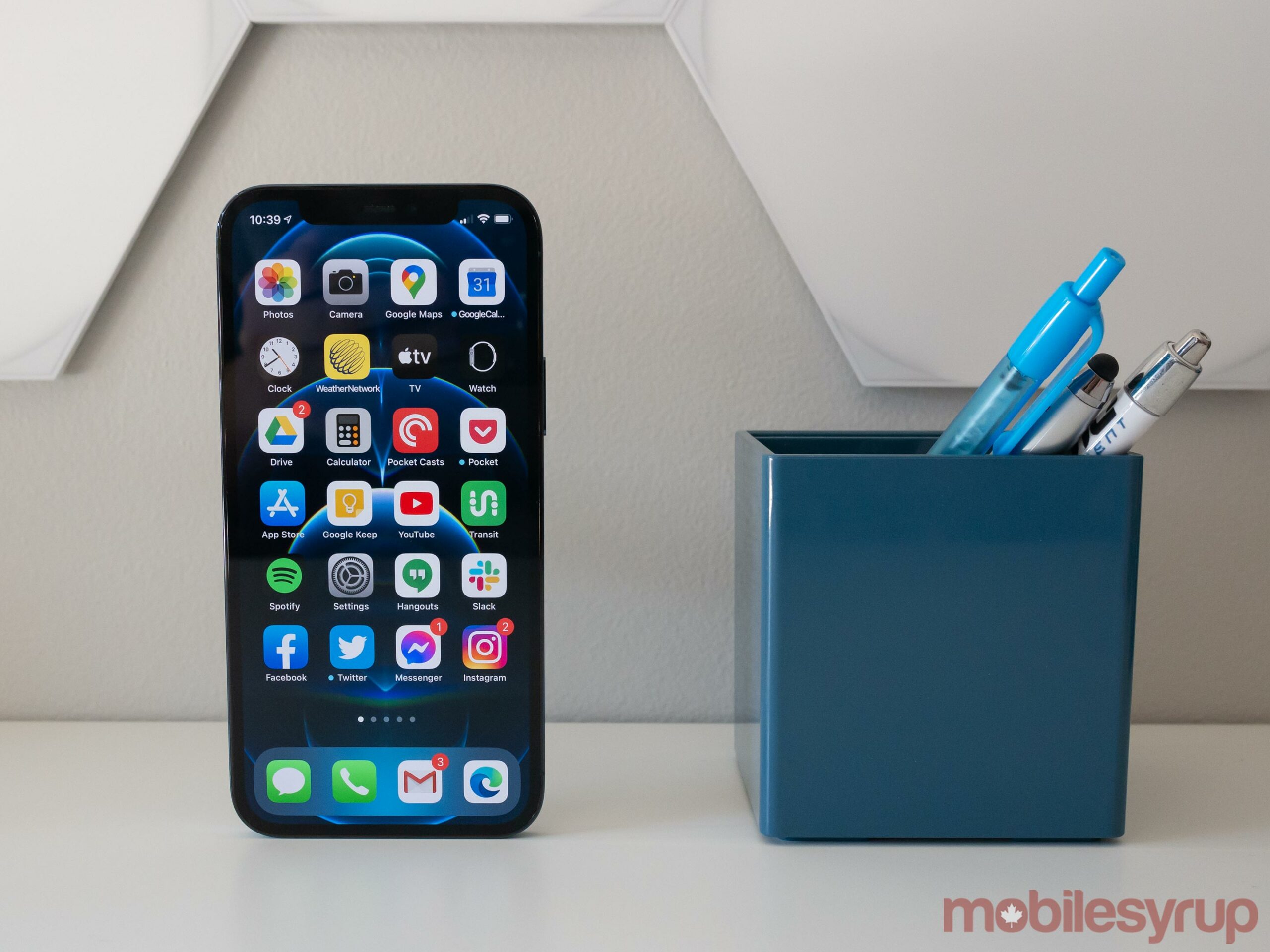
The other major change relates to improved low-light photography performance primarily powered by the iPhone 12 Pro and iPhone 12 Pro’s new Light Detection and Ranging (LiDAR) sensor and slightly redesigned camera array.
While most of Apple’s claims regarding the iPhone 12 Pro series’ camera improvements are accurate, they’re incremental. Still, if you’re a budding smartphone photography enthusiast, these updates could be substantial enough to warrant a purchase.
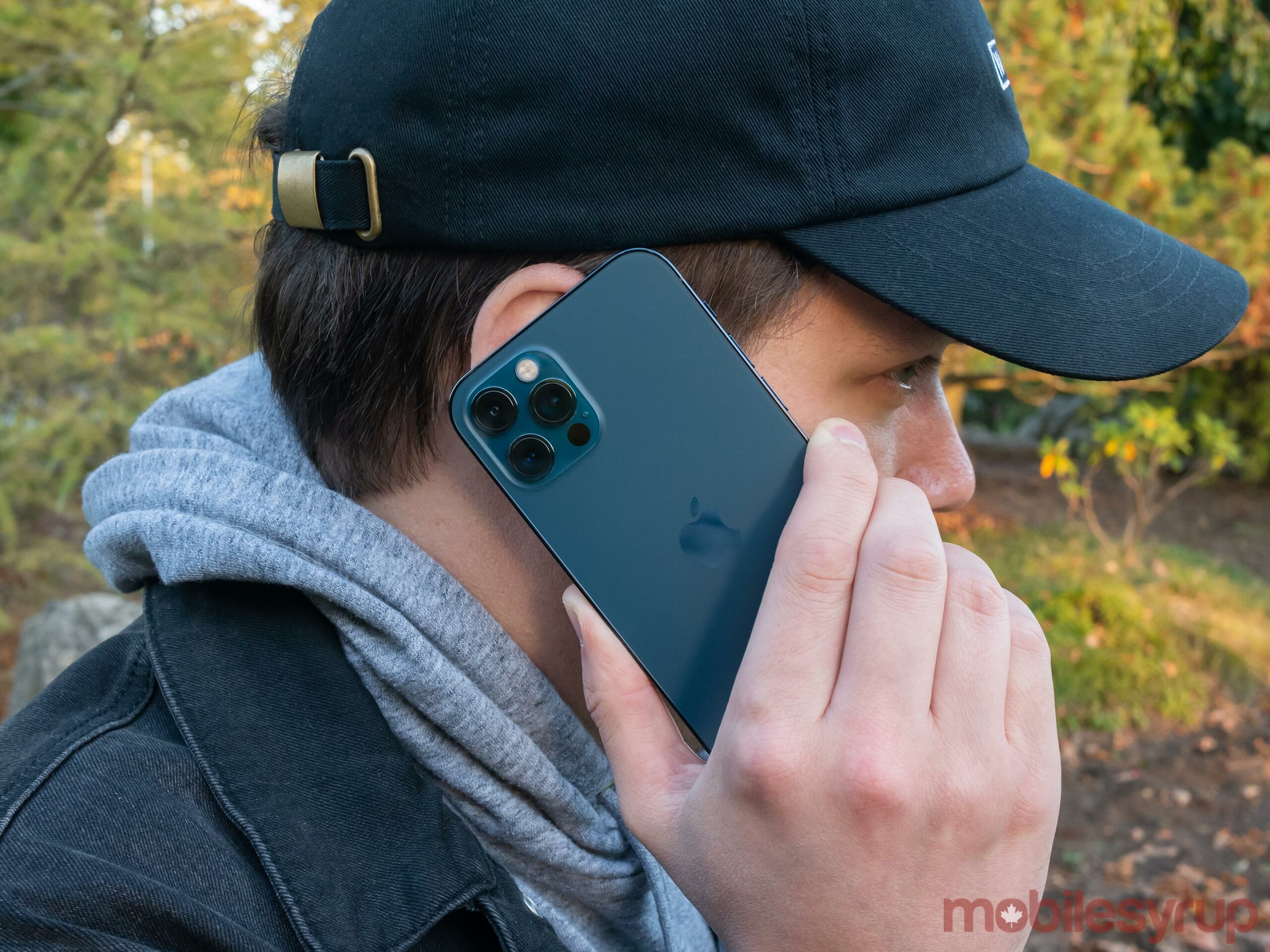
That said, there’s also the question of whether the ‘Pro’ series of iPhone 12 devices offer enough advantages at this point to even make them worthwhile for the average iPhone user.
There’s a lot to unpack with this year’s iPhones, so let’s get into it.
Update 09/11/2020: This review was updated with photos, image comparisons and information about the iPhone 12 Pro Max. The review score was not changed.

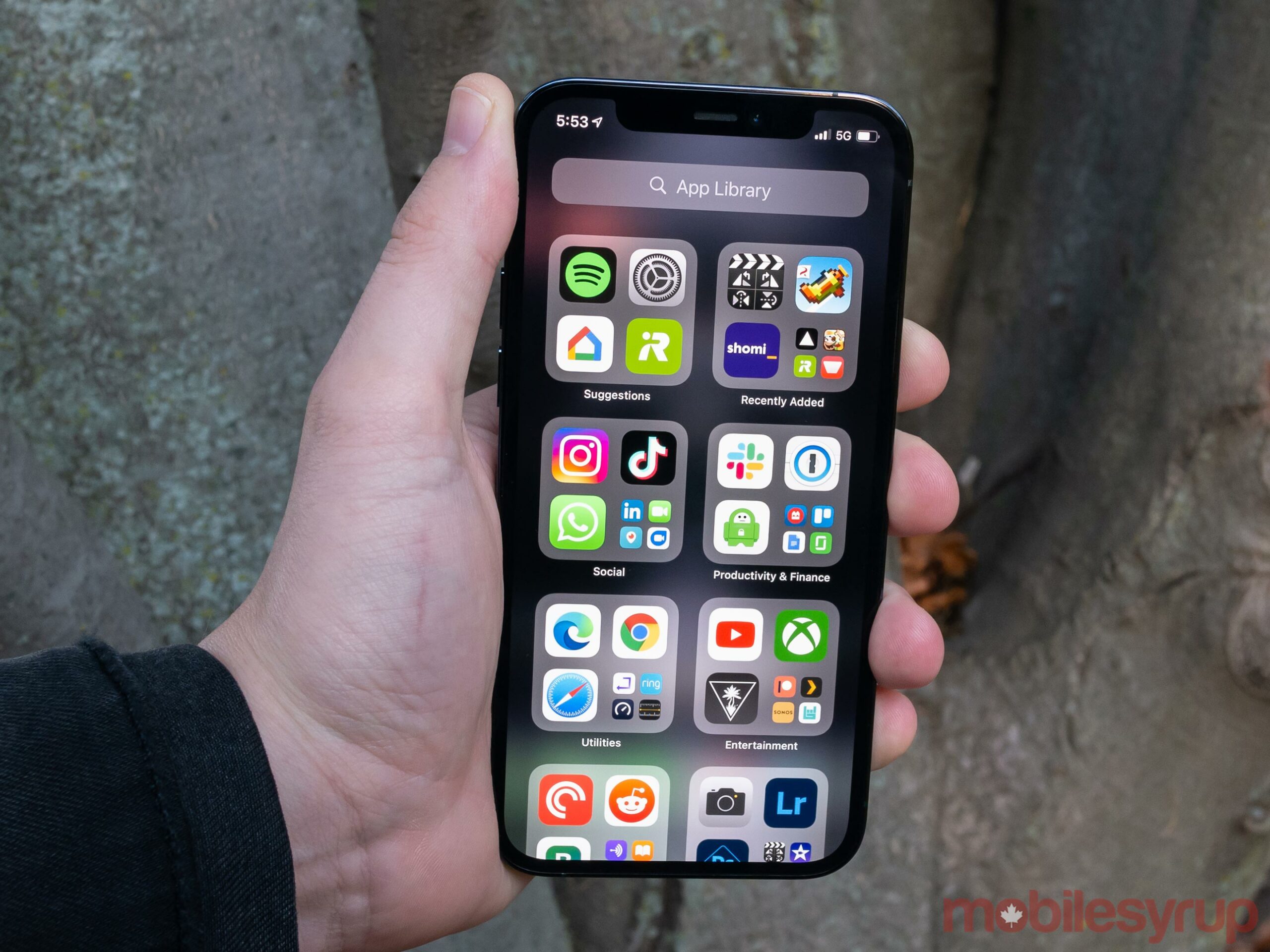
Despite the subheading above, the iPhone 12 Pro and iPhone 12 Pro Max are an obvious throwback to the iPhone 4-era of squared-off edges. However, the smartphones also clearly take inspiration from Apple’s more recent iPad Pro design and the iPad Air (2020).
At first, the iPhone 12 Pro/12 Pro Max’s squared-off look is jarring and feels equally strange when you’re holding the smartphone in your hand, but it’s grown on me over the last few weeks.
It gives the smartphone line a clear new design; place the iPhone X, iPhone XS or iPhone 11 Pro beside the new iPhone 12, and you’ll instantly recognize Apple’s new smartphones.
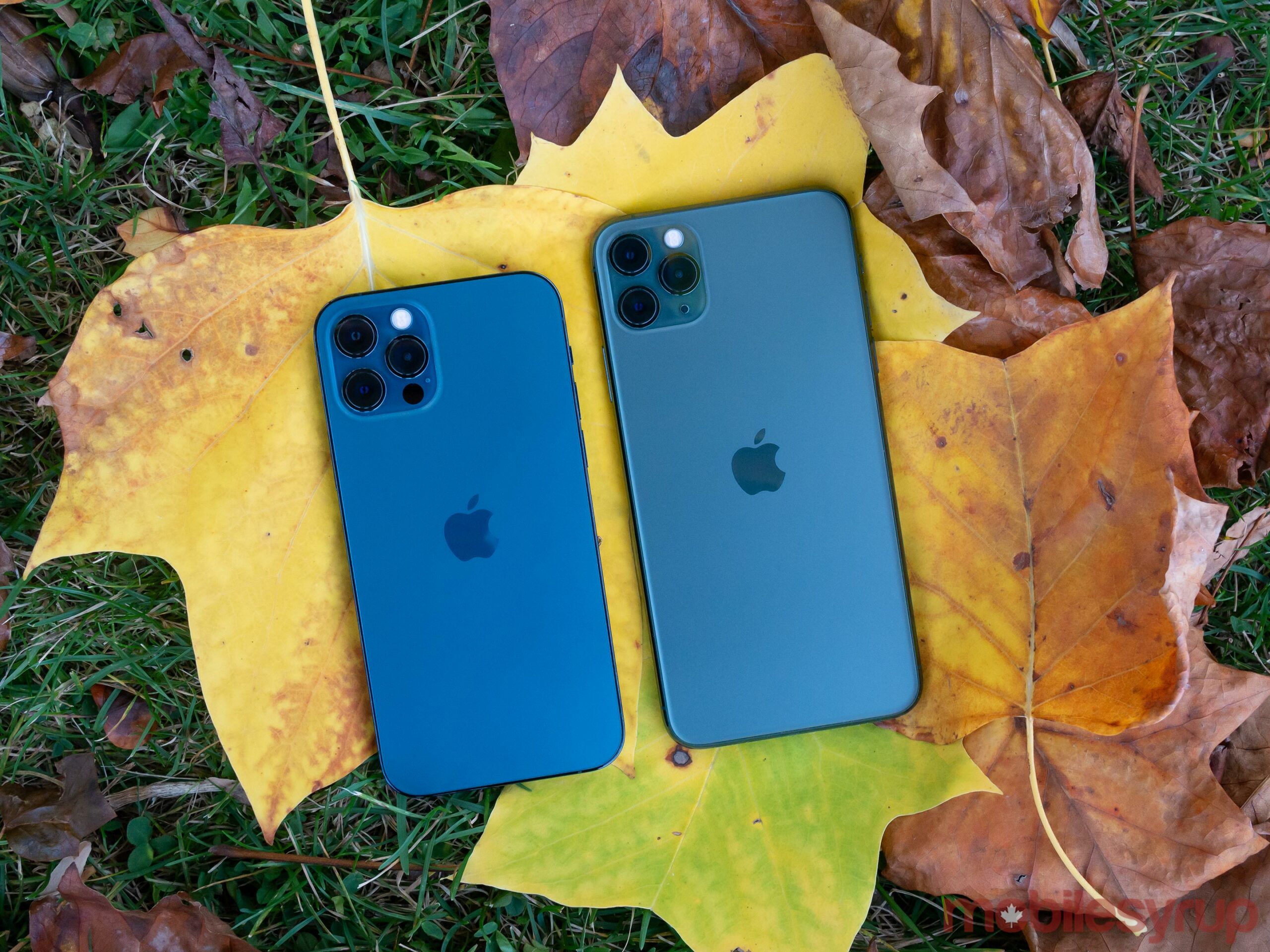
The squarer sides also make the device feel more substantial and easier to grip in your hand, which is great in this ongoing era of slippery smartphones. The power button remains on the device’s right side, with the volume buttons on the left. The buttons themselves have a fair amount of bounce to them, though they are flatter than those on the iPhone 11 series.
While the excellent, grease-resistant matte rear featured on the iPhone 11 Pro is back and complete with a new ‘Ceramic Shield’ construction the tech giant claims features four times better drop resistance, the stainless steel band running around the edge of the smartphone is an unfortunate callback to the iPhone X’s shiny border.
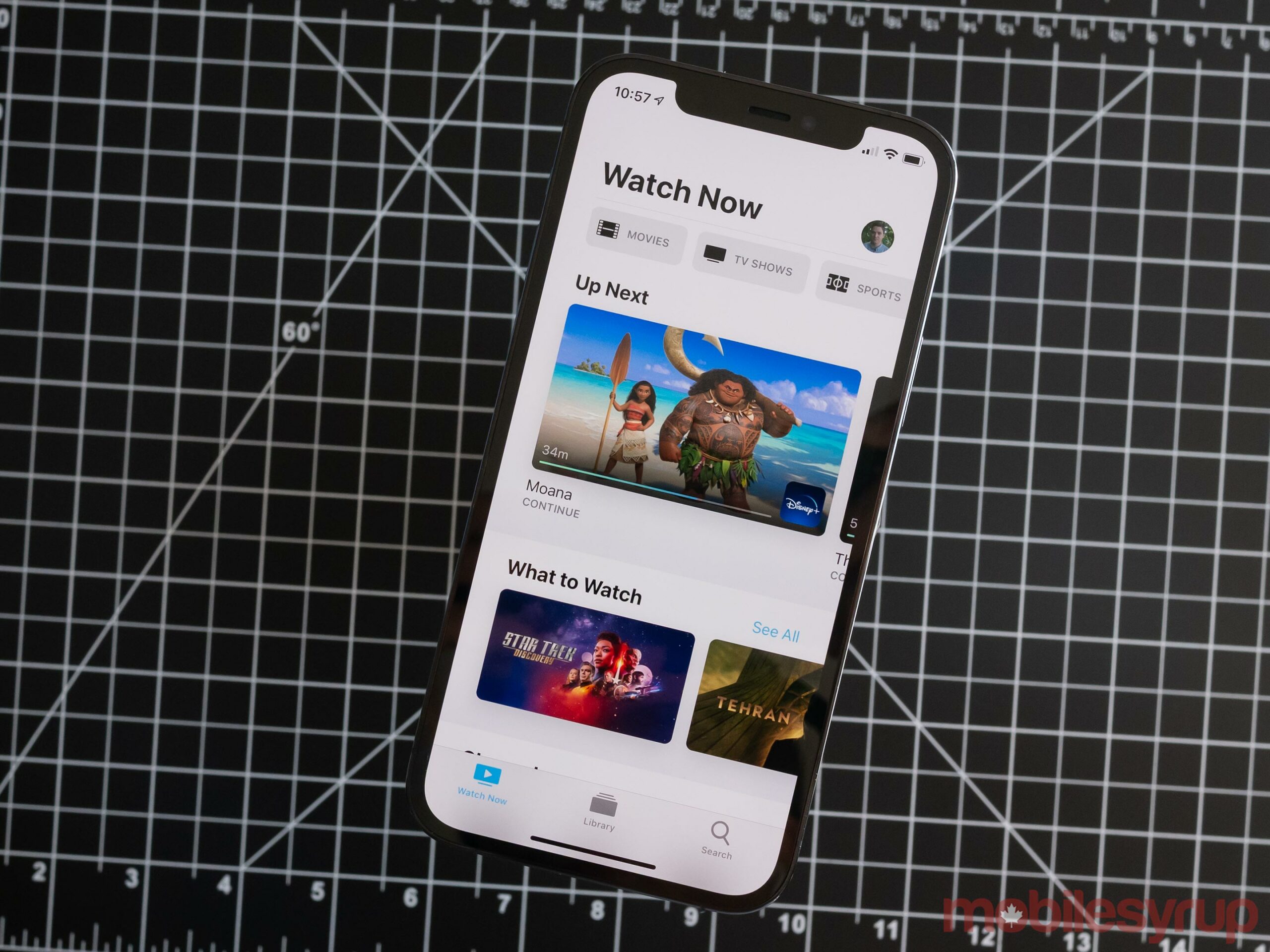
This means it attracts smudges and grease. Most people might not care about this, but it’s a strange blemish on an otherwise solid refresh of the high-end iPhone’s design. Strangely, the iPhone 12 doesn’t suffer from this same issue despite its lower-end aluminum sides.
It isn’t easy to verify Apple’s statements regarding the iPhone 12 Pro and iPhone 12 Pro Max’s improved durability regarding the new Ceramic Shield build.
“Overall, I like the new look of the iPhone 12 Pro and iPhone 12 Pro Max and view it as a positive step forward”
I’ll leave that up to wealthy YouTubers brave enough to test these claims out. However, what I can say is the iPhone 11 Pro Max I’ve been using for the last year is one of the most durable smartphones I’ve ever encountered, and, if Apple says it’s improved on that design, that is definitely a good thing.
With all that said, I’ve continually contended that everyone should at least be putting their smartphone in a case, with a high-end glass screen protector also being a good idea. Smartphones are pricey and accidents happen. Most tech YouTubers, bloggers, and journalists who claim they don’t use cases get sent so many smartphones that a broken device isn’t a big deal. This isn’t the reality for the average iPhone owner.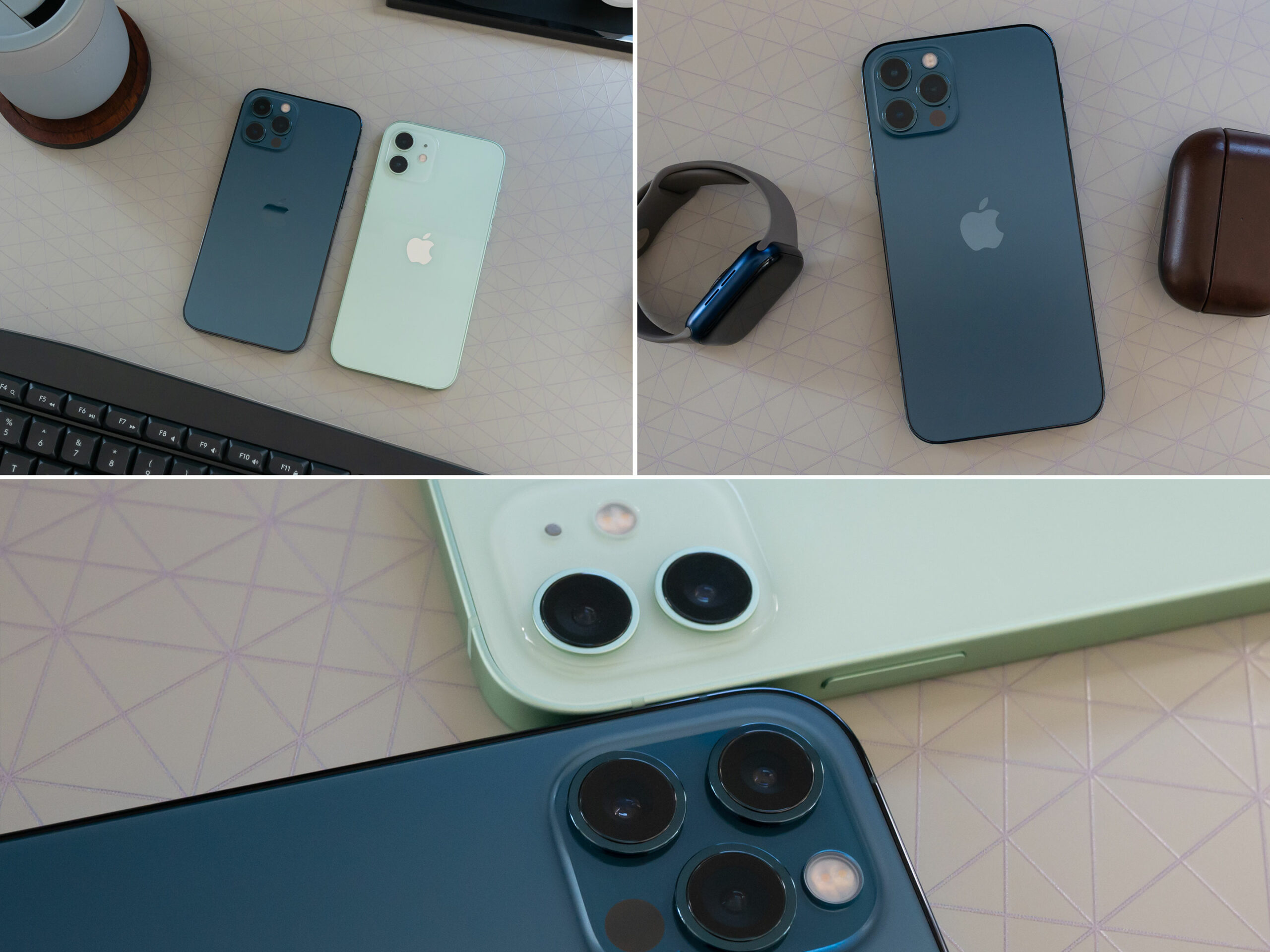
A LiDAR sensor now flanks the triple rear-camera setup with the same substantial camera bump as the iPhone 11 Pro. The display notch, which still isn’t as noticeable as some people make it out to be, returns with Face ID functionality that feels just as reliable as it was with the iPhone 11 Pro — this means it works roughly 95 percent of the time.
Regarding colours, the iPhone 12 Pro and iPhone 12 Pro Max are available in ‘Graphite,’ ‘Silver,’ ‘Gold,’ and ‘Pacific Blue.’ As you can see from the photos in this review, I have the Pacific Blue iPhone 12 Pro and the Gold iPhone 12 Pro Max. While the blue actually seems deeper than last year’s now-dead ‘Midnight Green,’ the new gold hue is surprisingly subdued. Though I like the new Pacific Blue colour, Midnight Green will likely forever go down as my favourite smartphone colour.
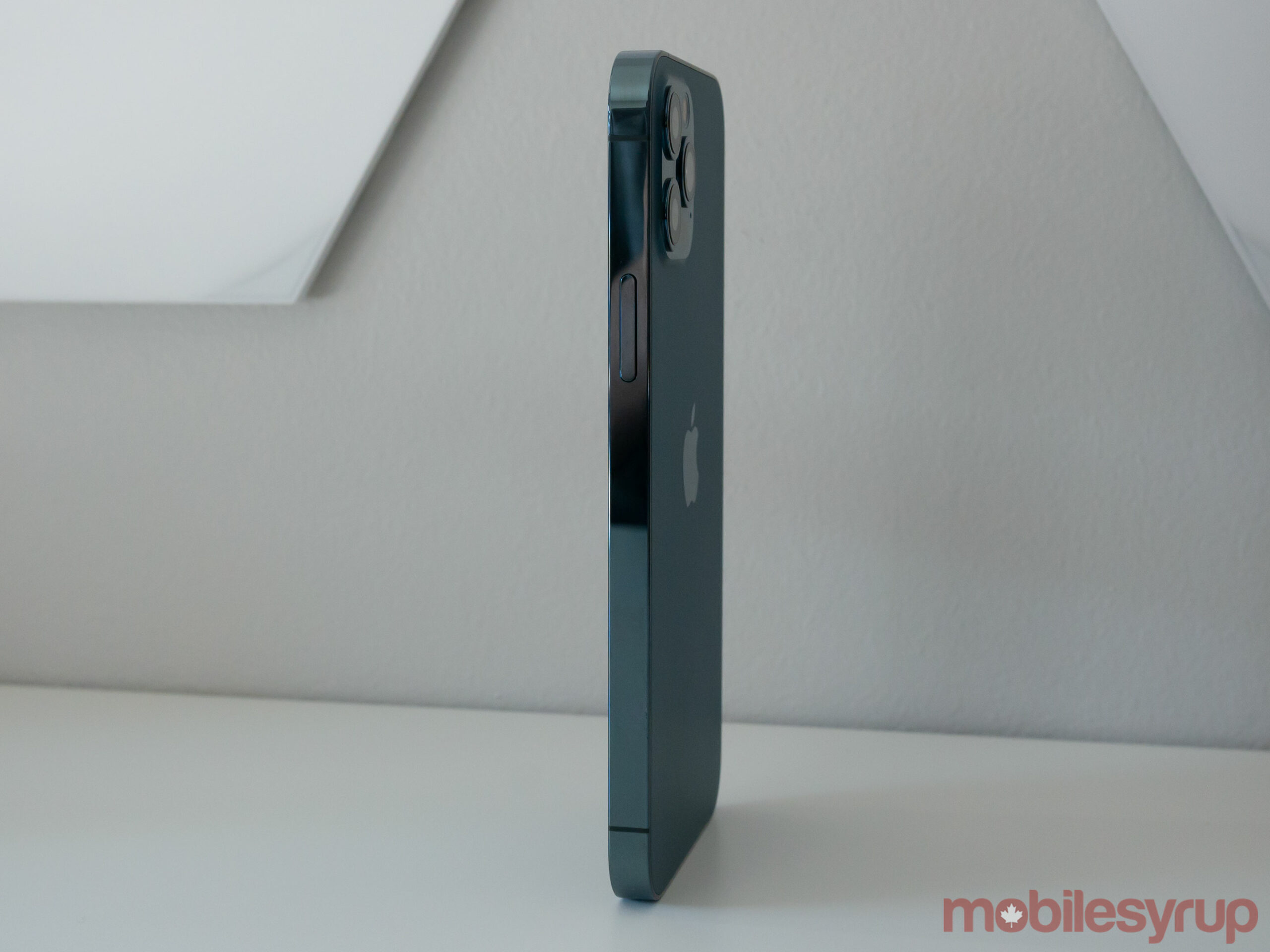
Overall, I like the new look of the iPhone 12 Pro and iPhone 12 Pro Max and view it as a positive step forward.

Apple’s new A14 Bionic processor is an absolute powerhouse. The A13 was a leap above anything Qualcomm has produced and the A14 pushes that power even further.
For those who care about benchmarks, the iPhone 12 Pro comes in at 1,597 for single-core performance and 4,232 for multi-core. On the other hand, the iPhone 11 Pro Max hits 1,328 for single-core and 3,397 for multi-core.
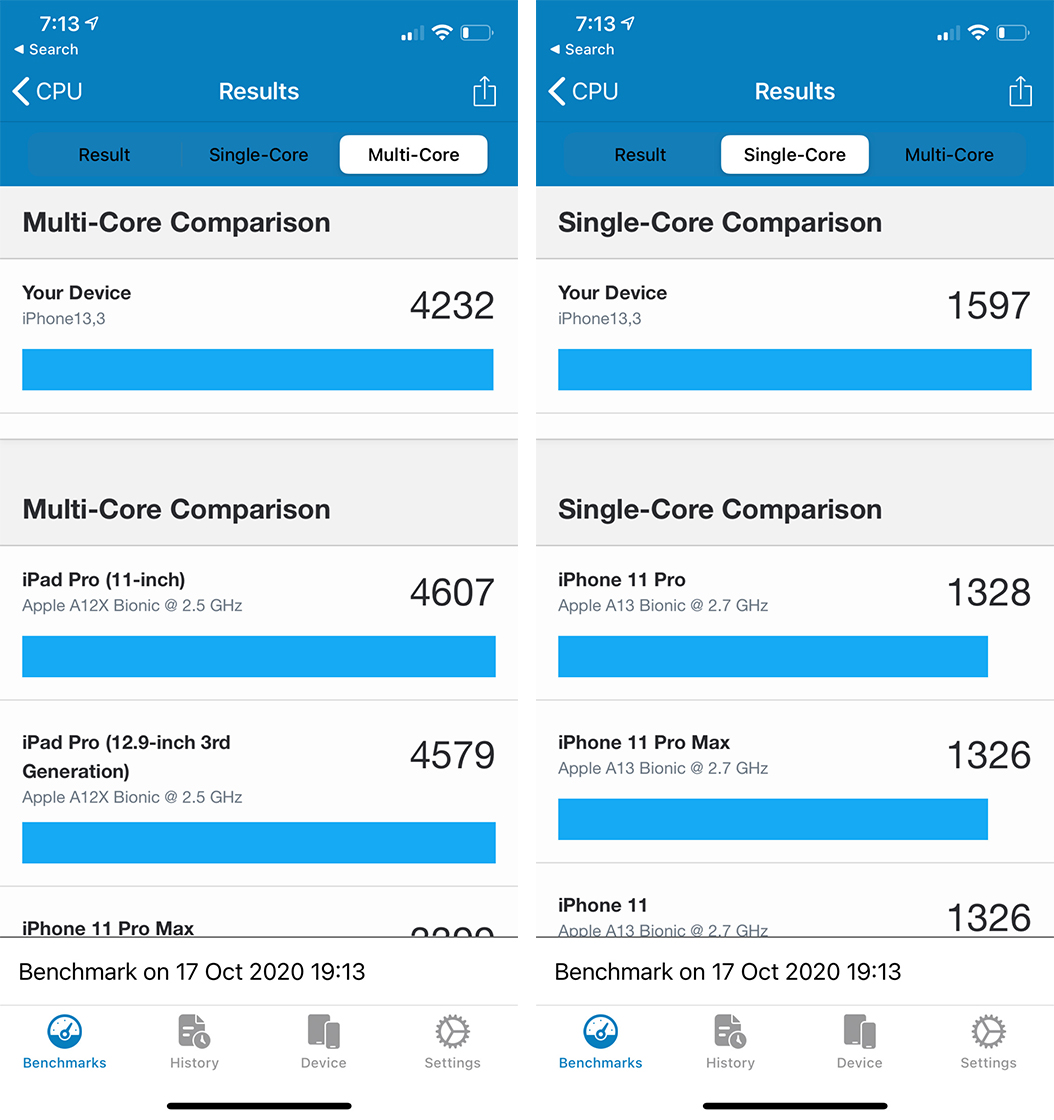
My experience with the phone, whether I’m playing games like REKT, doing quick photo edits with Lightroom, browsing the internet or watching content on Netflix, has been extremely smooth.
I haven’t encountered a single instance of lag during my time with the iPhone 12 Pro or iPhone 12 Pro Max.
There’s also the new LiDAR sensor that improves the iPhone 12 Pro series’ augmented reality functionality, just like the iPad Pro (2020), while adding faster autofocus in low-light and other camera improvements (more on this later).
“Everything from watching Netflix, to gaming, to just browsing the internet looks stellar on the screen”
I’ve always preferred Apple’s ‘Max’ model of iPhones. I appreciate the additional real-estate the devices offer, so using a 6.1-inch smartphone for part of this review has been a strange experience for me. That said, I don’t necessarily find the iPhone 12 Pro too small, especially since it’s an increase over the 5.8-inch iPhone 11 Pro’s size. Along with its larger display size, the iPhone 12 Pro’s screen measures in at a slightly higher 2,523 x 1,170 pixels compared to the iPhone 11 Pro’s 2,436 x 1,125 pixels.

On the other hand, the iPhone 12 Pro Max comes in at an expansive 6.7-inches and a 1,284 x 2,778 pixel resolution compared to last year’s 6.5-inches and a 1,232 x 2,688 pixel resolution. The 12 Pro Max is slightly taller than the iPhone 11 Pro Max, but manages to feature an 87.4 percent screen-to-body ratio, a slight improvement over last year’s 83.7 percent screen-to-body ratio with the iPhone 11 Pro Max.
While only a minor overall increase in display size, you really do notice that the iPhone 12 Pro Max’s screen is larger when looking at it directly beside the iPhone 11 Pro Max’s display. This makes watching videos, typing and performing nearly any task a great experience as long as your fine with using a large smartphone.

The display itself matches Samsung’s recently released Galaxy Note 20 Ultra in terms of vibrancy and colour, thanks to its P3 wide colour gamut with a 2,000,0000:1 contrast ratio and 1200 nits max brightness with HDR10 support. Everything from watching Netflix, to gaming, to just browsing the internet looks stellar on the screen.
Unfortunately, rumours surrounding the iPhone 12 Pro and iPhone 12 Pro Max’s display featuring a 120Hz refresh rate proved inaccurate. Whether there were concerns that 120Hz coupled with 5G would result in poor battery life or COVID-19 related manufacturing issues, the iPhone 12 Pro/12 Pro Max’s screen comes in at just 60Hz.
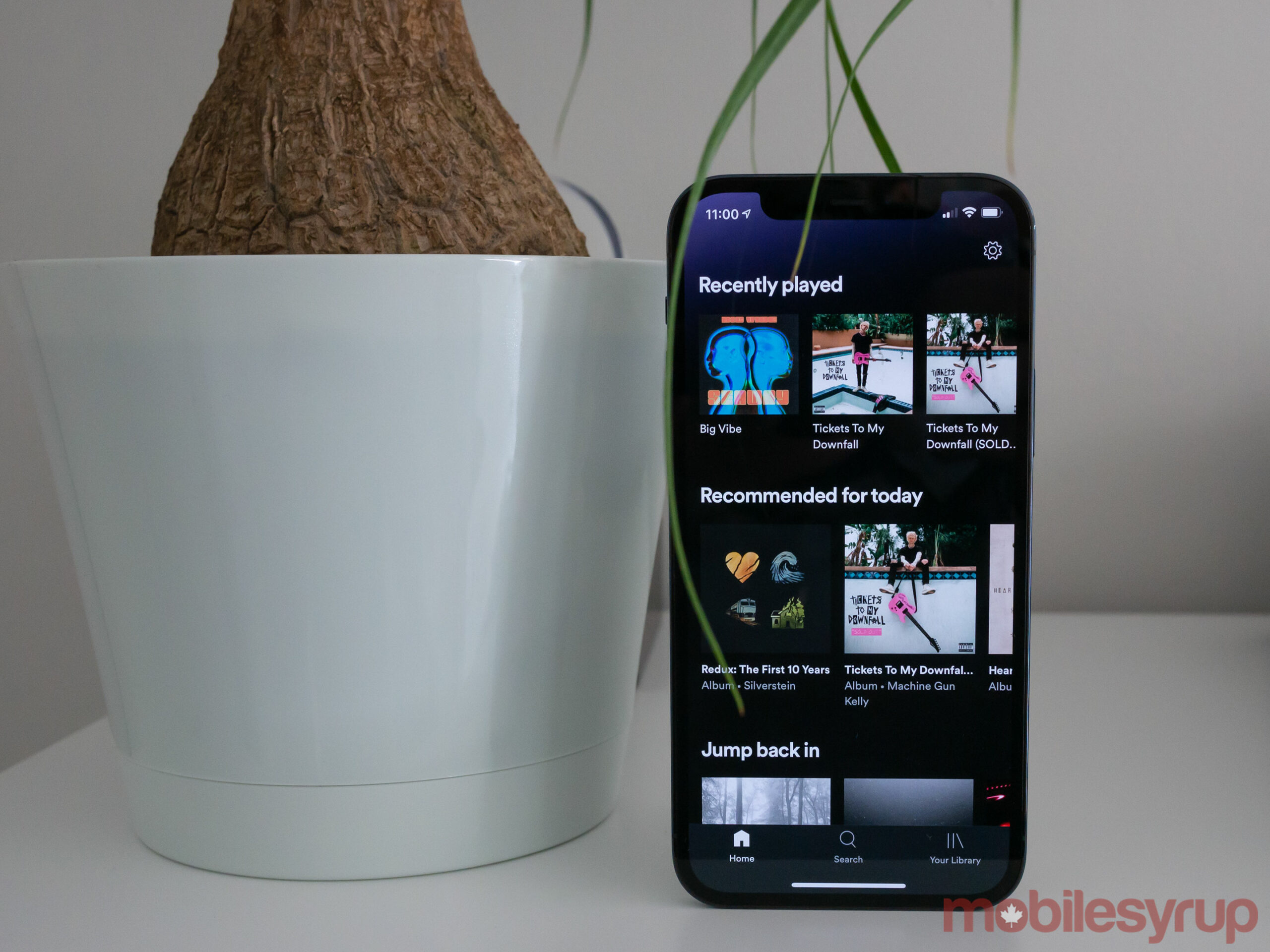
In some ways, this is totally unacceptable. Most high-end — and, in some cases, even mid-range Android devices — have moved on to smoother 90Hz and 120Hz displays. Even the iPad Pro features Apple’s great-looking ‘ProMotion’ 120Hz technology. In 2020, it seems strange for the tech giant’s flagship not to include a higher refresh rate display.
On the other side of this argument, while 120Hz is great, it’s not a feature most people will miss given that the difference isn’t drastic and really depends on the type of content you’re consuming. Still, it would have been great to see Apple bring a 120Hz refresh rate technology to the iPhone this year.
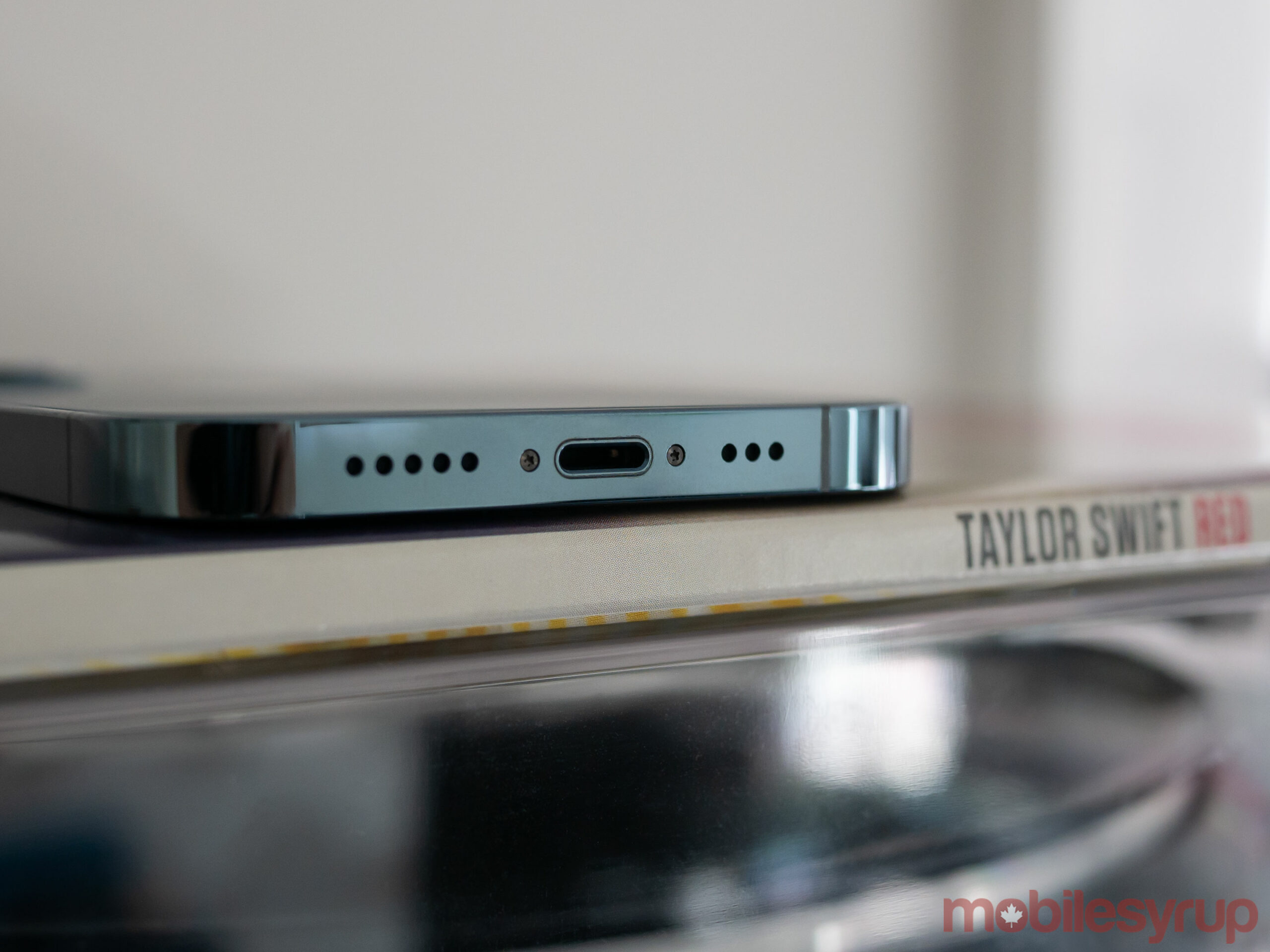
Storage size starts at 128GB compared to last year’s 64GB, which is a good move on Apple’s part considering the tech giant’s smartphone line lags behind most of its Android competitors in the storage department.
Another spec worth noting includes that the iPhone 12 Pro series is still IP68 rated, though this time to a maximum of 6 metres for up to 30 minutes instead of 4 metres for 30 minutes like last year.
And, of course, the iPhone 12 Pro and iPhone 12 Pro Max still feature a Lightning port and not USB-C. At this point, it’s more likely Apple will ditch a connector port and go entirely wireless rather than switch to USB-C. I’ve tested out Apple’s MagSafe charger and can confirm that it attaches to the iPhone 12 Pro’s rear extremely easily. However, the charger, unfortunately, doesn’t come with a USB-C charging brick.
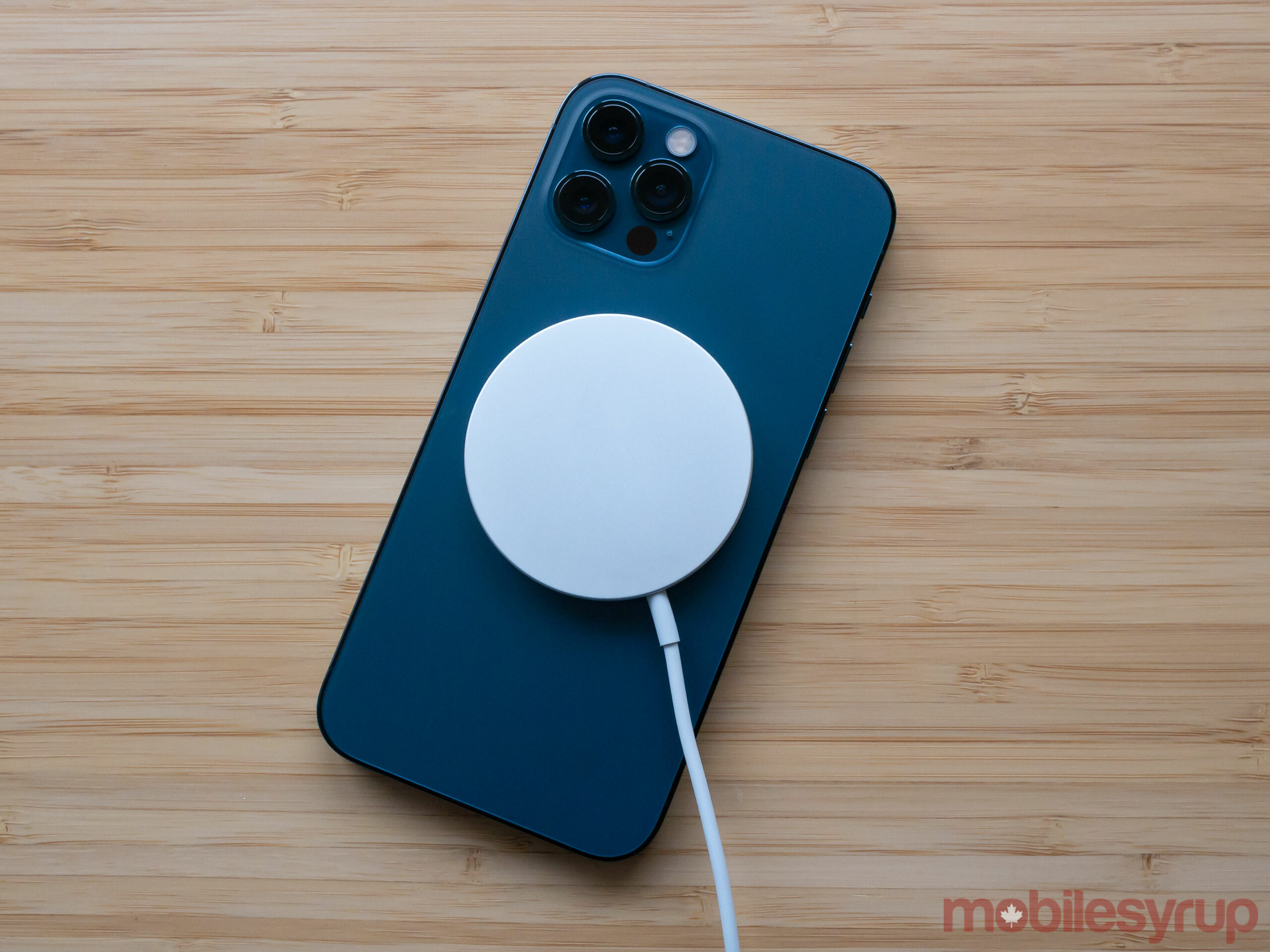
Apple’s various MagSafe charging cases are very similar to the standard leather and silicone smartphone enclosures the tech giant has released for years. They’re pricey, coming in at $69, but generally feel great and firmly attach to the new MagSafe charger. It’s worth noting that MagSafe still works with standard cases; the magnetic connection will just be slightly less firm. I haven’t tried Apple’s MagSafe Wallet attachment, but early impressions of the accessory are generally negative. The attachment seems to far too easily fall off the rear of Apple’s iPhone 12 MagSafe cases.
Regarding the iPhone 12 Pro’s battery life, I found that the phone comes in at roughly a day with moderate use, which matches my experience with last year’s iPhone 11 Pro Max. I experienced very similar results with the iPhone 12 Pro Max, though its slightly larger battery allowed me to get one or two hours more out of the device.
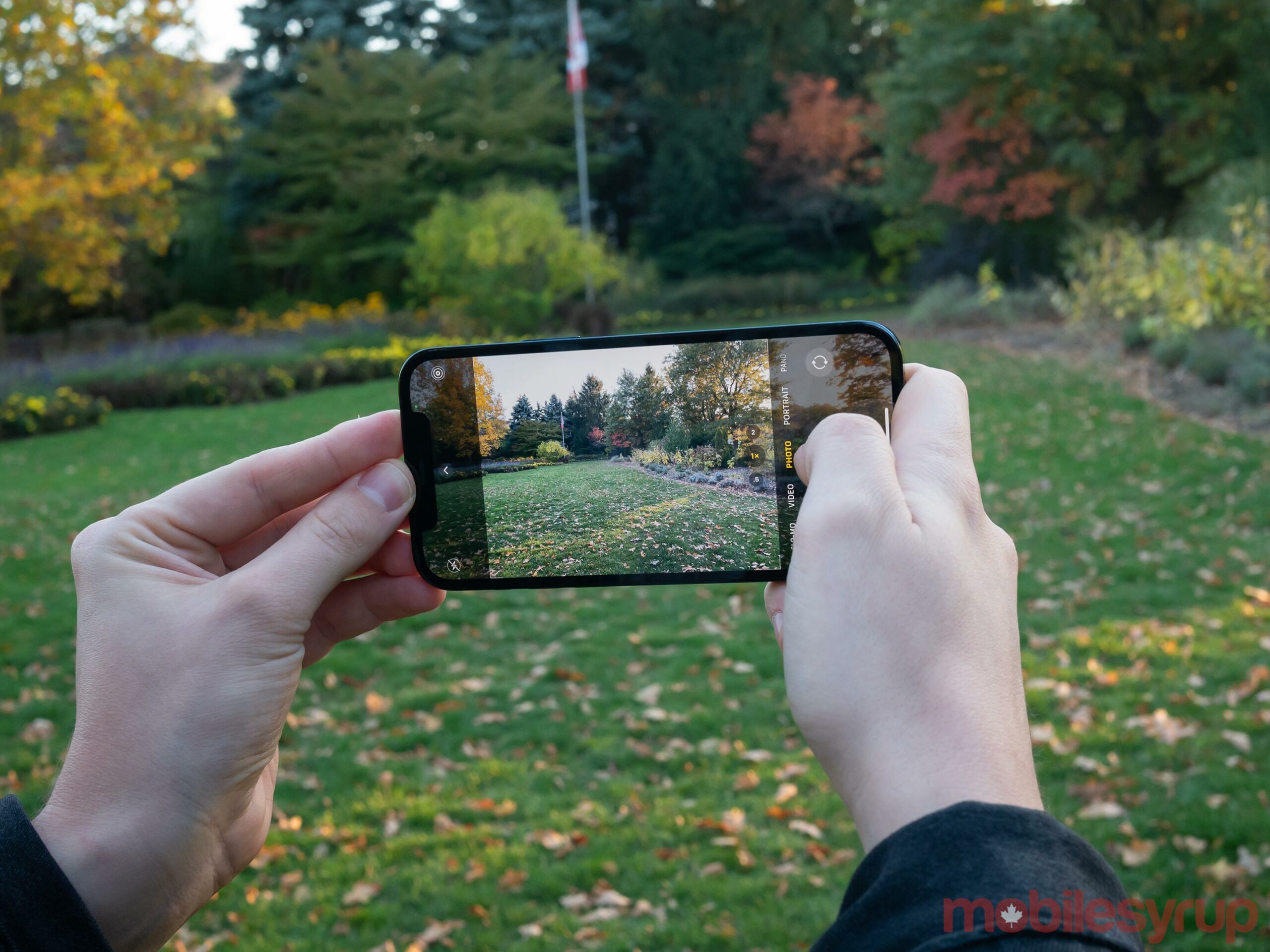
Camera-wise, there are several minor improvements to the iPhone 12 Pro’s array of shooters. First, the main wide 12-megapixel camera now features a wider f/1.6 aperture and a seven-element lens compared to the iPhone 11 Pro’s six-element f/1.8 lens. Apple says this improves the lens’ ability to gather more light by 27 percent.
In my experience, I didn’t notice a significant difference in performance, but this lens does seem to shoot slightly less noisy photos.

The left image is shot with the iPhone 12 Pro, and the image on the right is shot with the iPhone 11 Pro Max. The iPhone 12 Pro photo features far more accurate colour tones than its iPhone 11 Pro Max counterpart.
On the other hand, the 12-megapixel f/2.4 ultrawide angle and the f/2.0 with 2x optical zoom lenses still measure in with the same technical specs as last year.
The real camera improvements come from the smartphone’s Smart HDR 3, the latest version of Apple’s behind-the-scenes image processing technology. Photos taken with the iPhone 12 Pro feature more detail, slightly greater contrast, more accuracy, greater colour vibrancy and, in general, look better than those shot with the iPhone 11 Pro Max, but only by a small margin.
Just like with last year’s iPhones, the images also look more true-to-life than the oversaturated photos snapped by smartphones like Samsung’s Note 20 Ultra.
09/11/2020 09:52 PM
09/11/2020 03:56 PM
09/11/2020 07:50 PM
09/11/2020 02:00 PM
09/11/2020 11:06 PM
2014 © Canadian apps and news